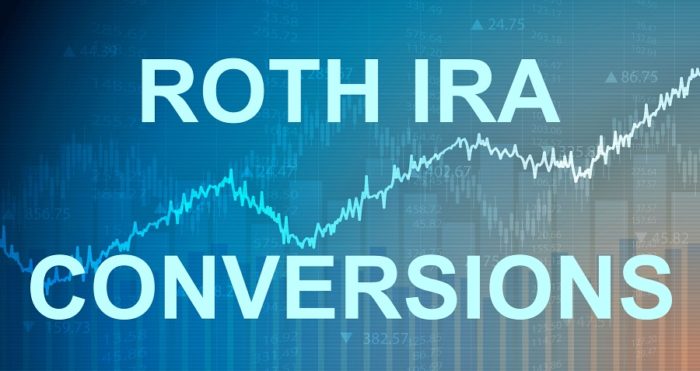Current Tax Discussions in Congress May Lead to Drastic Changes in Estate Tax Exemptions that Increase the Value of a Roth IRA Conversion Strategy.
For years, I’ve been stressing the benefits of Roth IRAs to our clients and their beneficiaries. In an environment of massive government spending and a constantly greater need to pay for social programs,  what could be better than an investment account in which you can purchase virtually anything you like, leave it for as long as you’re alive, trade it whenever you want, and pay no CURRENT or FUTURE income taxes? While it might seem odd to describe a financial instrument in these terms, I find the Roth IRA to be a gorgeous strategy.
what could be better than an investment account in which you can purchase virtually anything you like, leave it for as long as you’re alive, trade it whenever you want, and pay no CURRENT or FUTURE income taxes? While it might seem odd to describe a financial instrument in these terms, I find the Roth IRA to be a gorgeous strategy.
Let’s look at what is likely to happen in the next few years under a Congress and White House that is controlled by one party.
The current proposal in the Senate calls for an estate tax exemption (credit) of $3.5 million per person or $7 million for a couple. This is a huge drop from the current limit in 2021 of $11.7 million per person. Additionally, the tax rate is proposed to increase from 40% to 45% and higher on larger estates. Income tax changes are similar with a proposed increase in the top marginal rate from 37% to 39.6% and an additional 6.2% social security tax on earned income above $400,000. High earners would be paying as much as 45.8% of their wages in taxes.
This is a concern for many of our clients who have substantial IRA balances, often in excess of several million dollars. These same clients often have pensions or other sources of income and usually take the required minimum distribution (RMD) from their IRA. They do this because they have been taught not to pay current income taxes on funds that can be deferred. Usually, while taking small withdrawals, the IRA continues to increase in value. However, under the new laws, this approach could create a tax time bomb for their children. It may make financial sense to pay more in taxes now to save their children from a substantially higher tax bill later.
Consider this Case Study:
Bob and Jill are retired. He was a schoolteacher and she was a financial industry executive. They have enough pension, social security, and dividend income to live on without needing to access their IRAs. They have 2 children, a daughter who is a surgeon and a son who owns a technology company. Both of the children are in the top marginal tax rate of 37%. Bob & Jill are in their early 70’s and just started taking funds from Jill’s $3 million IRA. Bob and Jill hate having to take out the roughly $125,000 from the IRA because it is taxed immediately.
Bob’s parents also left them a farm in Nebraska and it will pass to their children. It’s roughly 400 acres and worth about $4 million. They own a home in Connecticut worth $3 million and another in Florida worth $2 million. Their savings outside of their IRA accounts is over $5 million, in addition to the $3 million IRA. Under the current estate tax laws, Bob & Jill would owe ZERO estate tax when they pass. The basis of all of the properties and their investments outside of the IRA would receive a step-up and they could sell everything without even paying capital gains taxes. The only tax issue would be their IRA; the two children would need to liquidate within 10 years (a new rule under the 2020 Secure Act). If the current tax rate was in effect, the kids would owe $1,110,000 in tax on the IRA (not assuming any growth) and it would need to be paid in the 10 years after Bob and Sue were gone.
Under the proposed changes, this situation is dramatically more expensive. The IRA would still have the 10-year liquidation, but now the tax would be $1,188,000. The estate’s assets taxed at a 45% tax rate above $7 million would result in a $4,500,000 federal tax obligation.
Under the potential new system, how could Bob & Jill reduce the tax burden from the IRA and increase what could be passed to their children? If they considered a Roth IRA conversion now, they would move taxable funds into a tax-free account that does not have a required distribution, would accumulate tax free growth, and would not be taxable as income to their high-earning children. If they converted the entire $3 million account and paid 37% federal income tax today, they would pay $1,110,000. While that may seem counterintuitive to pay tax now, consider that they have also just reduced their total estate by $1,110,000 and they will save the estate tax on that reduction, producing a net estate tax savings of $499,500!
That’s right, every dollar in a Traditional IRA will be subject to the full estate tax even though it is not technically worth $1 on an after-tax basis. If you have a taxable estate, you should ask yourself why you would consider leaving your children a traditional (taxable) IRA. There are strategies for doing Roth conversions and if you are in a lower tax bracket in retirement, you may want to stretch the conversions over a series of years. You may not benefit from the low rates we enjoy today, but you may reduce the total tax rate if you spread distributions. Every situation and family is unique; we build models for clients to demonstrate what we believe is the best strategy for reducing or eliminating the upcoming tax time bomb.
A final thought: if you just cannot stomach the idea of a large tax bill by doing Roth conversions, you can also consider buying a life insurance policy in a trust outside of your estate. The funds you withdraw for your RMD can be used to pay the premiums and the proceeds from the insurance policy will pass to your children both income and estate tax-free.
This is a case study and is for illustrative purposes only. Actual performance and results will vary. This case study does not constitute a recommendation as to the suitability of any investment for any person or persons having circumstances similar to those portrayed, and a financial advisor should be consulted. This case study does not represent actual clients but a hypothetical composite of various client experiences and issues. Any resemblance to actual people or situations is purely coincidental.



